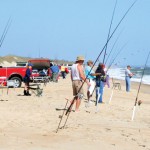Should Dare County Expand Public Transportation?
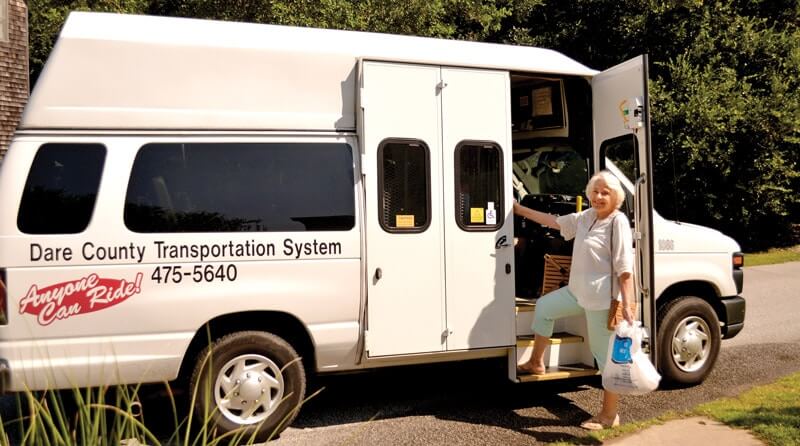
With two-day notice, curb-to-curb transportation is available to all Dare County residents and visitors.
Welcome to our new column series, Let’s Give Them Something to Talk About, where we will ask you, the readers, to speak out about topics that concern residents and homeowners on the Outer Banks. My Outer Banks Home decided to kick off this inaugural article by asking about public transportation in Dare County.
What we thought was a simple issue turned into a contentious debate with many of our respondents. A few citizens wished to remain anonymous, recognizing their public opinion in a small town might bring criticism and judgment. Some locals were enthusiastic about the topic and were eager to offer their recommendations but did not want to be a part of the full survey.
We wanted to give people something to talk about; we just didn’t realize how much you had to say!
Do you think Dare County needs a public transportation option?
Of the six interviewees, four strongly agreed that Dare County needs to address the issue of public transportation for both locals and visitors.

Rozerin Soroogle
“Of course we need public transportation!” said visiting Turkish student Rozerin Soroogle. She spent the summer working at Kitty Hawk Kites in Nags Head and, like many summertime workers, Soroogle had no public transportation options to get to work. “When I first got here, they didn’t even give me a bike to ride. I had to get a ride to work from a friend.” We’ve all seen students walking or riding bikes along the bypass in the summer and know of the unfortunate collisions that occur between vehicles and pedestrians or bikes.
Barbara Becker, a five-year resident of Southern Shores, said “Yes, [Dare County] absolutely does need a public transportation option.” A volunteer for Hands of Hope, Becker drives people to radiation treatments who are unable to drive themselves and who have no other transportation. “I have no idea what it would cost to take a taxi, [but that cost] is another reason to have public transportation available,” she added.
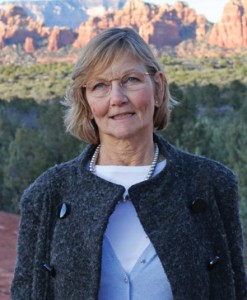
Barbara Becker
Lynn Blackburn, chairperson of the Dare Literacy Council (DLC) concurs, “I do believe Dare County needs [a public transportation option].” The DLC helps adult residents in need of tutors for learning English and help with their reading skills. By providing public transportation, Blackburn suggests we would be helping our community by adding educated citizens to the workforce. “Our students who attend the College of the Albemarle in Manteo and [are working to pass] GED exams…would benefit from more transportation options,” said the long-time Dare County resident, “especially if they do not live in the Manteo area.” She added that students would provide the system with much needed users in the off-season.
Retiree Carol Schlaker points to the needs of the non-driving elderly, including herself. “It’s an isolated world when you don’t drive.” Though she has family nearby, Schlaker doesn’t want to put the burden on them to get her around town for every errand.
Native, Harvey Hess III, disagrees with adding a public transportation system here. “I just don’t see how it would work down here. The Outer Banks is not the right area for it. I’m for public transportation in a city, but not here, we’re too long,” he explains, pointing out the problems posed by the geography of our narrow strip of beach.
House designer and lifelong resident, Mike Mangum, echoes Hess’s sentiments, “I have mixed emotions about it; there are people who need that type of service. But, how far [would it run]? From one end to the next? It would be nice to have some of the vehicles off the road, but the spread of Dare County is so big.”
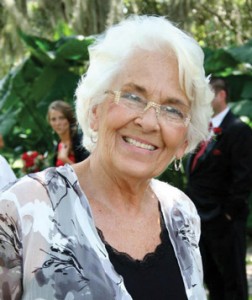
Carol Schlaker
What kind of public transportation do you think would work in Dare County?
Aside from the anonymous respondent who posed hypothetically, “Why not run natural gas-powered, double decker buses from Duck to Manteo?” there were not many colorful or mind-bending suggestions. Soroogle and Blackburn both suggested that buses might be a viable option, but Hess and Mangum challenge the logistics. Schlaker envisions an expansion of the van service that is already in place.
“You would be dropping people off at places they would need to get another ride from,” says Hess, pointing out that many residents do not live a convenient walking distance from the bypass and would need a ride to a stop. Hess, whose restaurant, Capt’n Franks, is located on one of Kitty Hawk’s most congested areas of the bypass, is concerned about the increased congestion of traffic. “Would buses be making stops on the bypass? And how many stops would they make?” he asked.
Becker suggests a midsize option, “It seems to me there [might be] minivans that could run up and down the bypass and keep making the tour back and forth.” Larger neighborhoods set back from the main road, like Colington, might need their own minivan. Becker says it would all hinge on strategic planning by town and county management, and the system may require the construction of pull-off areas for minivans making stops on the bypass.
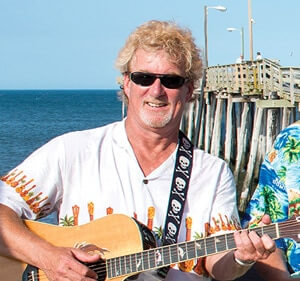
Mike Mangum
“I know there’s already a service for retirees and the handicapped,” says Mangum, referring to the Dare County Transportation Systems (DCTS) vans. DCTS vans are, in fact, available for use by all Dare County residents regardless of age or ability and Schlaker is a huge fan of this system that is already in place. (See info box below) She said, “I’ve lived in eight different states and I haven’t driven in years. [The vans] have been wonderful for me to get out and around.” Her single issue is with the limited availability of rides, since the van schedule fills up quickly. “The only option I could suggest…maybe more vans because [they] are quite busy and I’m not always able to get a ride.” Operated by the county, the vans are not allowed to interfere with the commerce of taxis or charter vans; therefore, they require a two day, advance sign-up for door-to-door service.
Hess shares a concern for the welfare of the county cab drivers. By adding buses “you’re going to take work away from twenty cab drivers, [which is] taking private money away from private businesses.”
How would a new public transportation option be funded?
Becker says, “Good question. One could ask people to pay a fee, [and supplement that] with some kind of public funds.”
Blackburn agreed, “I think a combination; I think there could be grant possibilities [for the county]…subsidized by tourist money.”
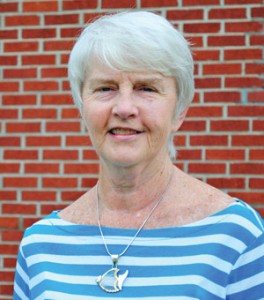
Lynn Blackburn
Schlaker’s expanded van services would be an extension of the shared funding already in place with the user, the county, and the state all pitching in.
Mangum was at a loss, “I have no idea how it would be funded or what would be the best way.”
Hess was against the further spending of Dare County funds, as it’s “one more thing we’re asking the government to do for us.”
As for the currently operating DTCS vans, according to the Dare County website, they “are operated by grants from NC DOT Public Transportation Division and funds from Dare County.”
What should a ride cost?
Reflecting her European upbringing, our student respondent, Soroogle, said, “As a student, I wouldn’t want to pay for [a ride]…I don’t think [Dare County] is that big and [it] should be able to pay for it.”
More conservatively, Becker suggests, “Maybe $1 or less. There might be a lot of people who can’t afford $1 per day. For [those] who can’t afford it, maybe there could be an income-based option.”
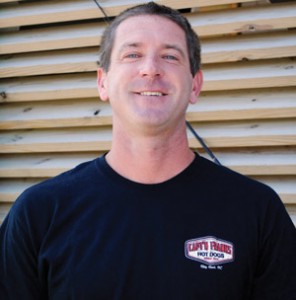
Harvey Hess III
Schlaker praised the simple, flat-fee structure of the DTCS vans. “It’s $3 per trip which is marvelous because in Florida I was paying $35 for a cab ride.”
It seems there are no straightforward answers to our questions. Certainly, some year-round Dare County residents would benefit greatly from an affordable, user-friendly public transportation option. However, during this tight budget season, without a centralized downtown or commerce area and only two main roads on which to operate, logistics and cost quickly become a major issue.
Try asking yourself, “Should Dare County make public transportation a priority? If so, how?” Not so easy to answer, is it? ♦



